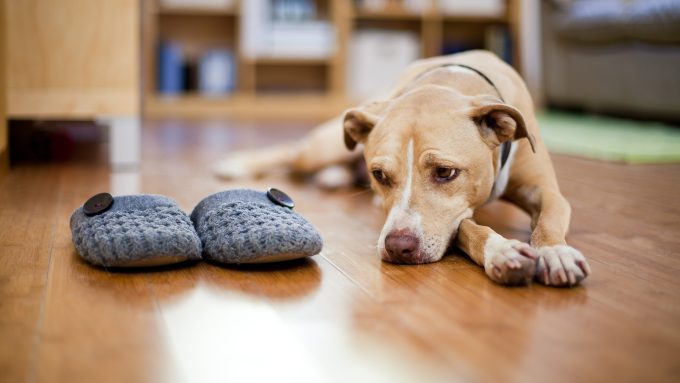
Giving your dog a mix of loving affection and attention is important. A dog that doesn’t get enough attention during the day may resort to bad behaviors such as destructive chewing, howling, or worse. But, how do you know if your dog is getting enough? Here are some signs you may spot when your dog isn’t getting enough attention.
The difference between attention and affection
While you may think attention and affection are the same, there’s a slight difference. Affection refers to the love you show your pet, such as taking time to cuddle them or give them a treat. But, simply loving your dog doesn’t meet all of their needs. They also need attention, such as going on walks to get out energy, working on training to deter problem behaviors, and getting routine healthcare. How much attention your dog needs will depend greatly on their size, activity level, and health needs.
Signs your dog isn’t getting enough attention
Here are some of the most common behaviors you’ll see if your dog isn’t getting enough attention — and how to solve them.
Destructive behavior
Dogs that aren’t being properly mentally stimulated will often create their own games to keep busy. And this often means destructive behavior. If you notice your dog is chewing on the couch, digging holes in the yard, or getting into the garbage more often, it’s a good idea to find alternatives that can keep them busy. Try out a puzzle toy that requires their attention, or a long-lasting chew toy they can focus their energies on instead. Or, go for a walk or run and take breaks to sniff new things to keep their brain active.
Excessive barking and other noises
A bored or stressed-out dog may start to vocalize more. This may come in the form of separation anxiety, such as barking when you aren’t home; or hypervigilance, such as howling at every small noise. Practice training techniques such as “calm” or “quiet” to help deter the behavior. Distractions such as chew toys, soothing TV or radio shows while you’re away, or having a friend or neighbor come by during the day can also help.
Aggressive behavior
Sometimes, a dog that isn’t getting enough attention can become very stressed out. This may manifest as aggressive behavior, such as redirected aggression towards other dogs or pets in the house, aggression toward people outside, or aggression toward family members. A frustrated dog may not know how to otherwise express themselves. If you notice your dog is acting aggressively, it’s best to seek help. Follow the advice of your veterinarian, dog trainer, or a behaviorist in your area. Together, they can work to address any issues and the underlying anxieties causing them.
Separation anxiety
An understimulated dog can also become an anxious one. Separation anxiety can happen for many reasons. However, a lack of attention can be one of the biggest factors. If you notice your dog is panicking or stressed out when you’re about to leave the house, take a few steps to help. Try to tire out your dog before you leave. An extra-long walk will make them want to nap while you’re away. Or, work on some basic training together daily to help stimulate their brain and body.
Attention-seeking behaviors
A dog that wants more attention may try to tell you with body language. If your dog is always glued to your side, pawing at you, nudging you, play-biting, or seeking you out, they may want some more care. Take some time to not only show affection with cuddles, but give attention too. Try going for a walk, playing a short game of fetch, brushing or grooming them, or practicing a new trick.
Knowing the difference between affection and attention can help you spot when your dog isn’t getting enough attention. Creating a healthy balance of stimulating activities and care along with ways to show your dog love will help keep those tails wagging.





